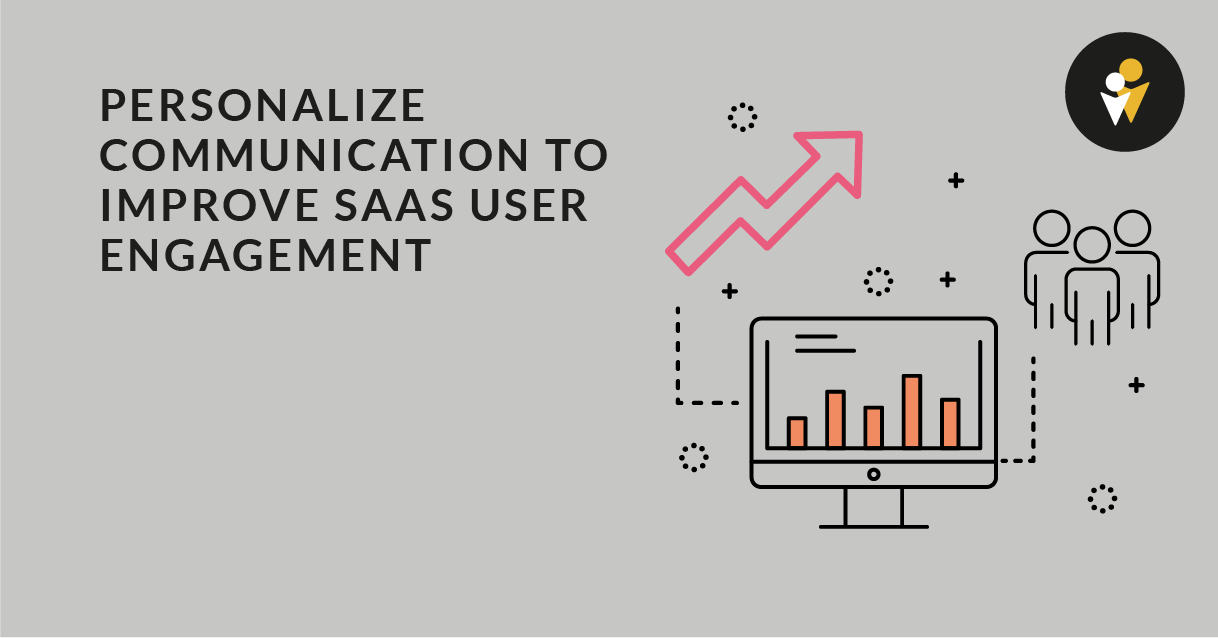User engagement is the key to success in the Software as a Service (SaaS) industry. It directly impacts customer retention and satisfaction, leading to overall business growth. With growing competition, maintaining SaaS user engagement is increasingly challenging. If user needs aren’t met, customers will abandon your service for another one that satisfies them. Additionally, it can be challenging with the constant innovation in technology, once again making it harder to be unique and keep up with user expectations.
An effective solution for improving SaaS customer retention is personalized communication, a method of using user preferences and needs to tailor messages and experiences to individual users.
In this article, we’ll dive into the key components of maintaining and enhancing SaaS customer engagement through personalized communication.
Key Strategies to Boost SaaS Customer Engagement
Understanding Your Audience
Through segmentation, you can break your user base into specific groups based on demographics, behaviors, and preferences. By identifying your heroes — the real people who are trying to accomplish important goals with your product — and studying their behaviors, you gain a deeper understanding of what motivates them. This allows you to tailor your offerings and communications to support each hero's mission.Instead of creating fictional personas, focus on developing detailed profiles of your heroes. To define your SaaS heroes, follow this process:
- Gather Quantitative and Qualitative Data: Collect data through user behavior, interviews, surveys, and platform analytics.
- Identify Insights and Patterns: Look for common goals, challenges, and behaviors among your user base.
- Develop Hero Profiles for Each Segment: Outline the mission, obstacles, and success metrics for each hero group you serve.
By understanding your heroes and the journeys they are on, you can create more meaningful, personalized communications that help them succeed — and, in turn, build lasting loyalty to your SaaS product.
The Power of Personalized Onboarding
A strong, personalized onboarding experience helps SaaS users quickly understand how to use the platform and ensure they feel comfortable navigating its features. Catering to individual needs and preferences will enhance users’ overall satisfaction, impacting both
To create personalized onboarding experiences, companies must reference user data. Here are a few quick steps to develop a personalized onboarding experience:
- Collect User Data: Gather quantitative and qualitative data through forms, surveys, and user behavior tracking to understand user behaviors, needs, and goals.
- Segment Users: Based on user data, segment consumers into specific user groups, such as “small business owners” or “marketers”.
- Tailor Onboarding Flows: Create customized onboarding flows, such as different tutorials paths, feature highlights, and resources, for each user segment.
- Utilize Automation: Use automation tools to personalize messages and content. Automated messages can guide users based on interactions and levels of engagement.
HubSpot is a platform that provides a personalized onboarding process. After signing up, users can interact with personalized training sessions and schedules based on their industry and platform needs. This allows users to use the platform in a way that aligns with their business goals.
By implementing a personalized onboarding process, you can significantly impact user retention and business success.

Tailored Communication Channels
There are various communication channels that SaaS companies can use for engaging users. Here is a breakdown of effective communication channels:
- Email: This channel is best for detailed information, including product updates and nurturing leads. When personalizing emails, make sure to craft engaging and relevant subject lines that will prompt users to open the message. Using the user’s name can increase open rates.
- In-App Messages: This channel provides real-time updates and announcements. In-app messages can be personalized by sending messages based on user actions. Using clear call-to-actions will guide users with next steps.
- Push Notifications: This channel is best for timely reminders and re-engagement opportunities. Push notifications can drive immediate action. Tailoring notifications based on user behavior and keeping messages direct encourages users to engage instantly.
Not one communication channel works for every segment. When choosing the right channel for user segments, consider the user’s behaviors and preferences, as well as their stage in the customer journey. For instance, long-term users might prefer more detailed updates via email compared to a new user who might enjoy in-app messages during onboarding.
Leveraging User Behavior Data
Tracking behaviors within a SaaS product allows companies to understand how users interact with features and identify pain points.
Analytic tools, such as Google Analytics or Amplitude, collect user data and provide insights on user flows, feature usage, and drop-off points. To analyze specific actions, event tracking is an option to monitor form submissions, button clicks, and other forms of engagement. Additionally, session recording tools can provide a visual representation of interactions. Lastly, surveys and feedback forms can gather information about user behavior.
After identifying user behavior, you can set up trigger events that will prompt specific communications after certain actions. These messages can be personalized or provide additional resources for users. For example, if a user completes a significant milestone, a company may send a celebratory email that celebrates their achievement with a potential discount or offer.
The Role of Automation
Automation is an important tool for personalized communication. It allows you to send personalized communication to large audiences without requiring manual effort. By automating communication, companies can focus on higher-value tasks. Additionally, automation helps maintain consistent messaging in a timely manner. Overall, automation can scale personalized communication without sacrificing SaaS customer engagement quality.
Automated personalized email campaigns can improve user retention. Here are some quick tips on how to set up automated personalized emails:
- Define the goal of your email campaign.
- Use data to segment your audience.
- Develop templates for each segment with personalized content (user’s name, tailored recommendations, etc.)
- Use automation tools to establish triggers (sign-ups, inactivity, etc.) for your email campaigns.
- Monitor metrics, such as open rates, click-through rates, and conversions.
- Re-evaluate and optimize your messaging based on metrics.
Automation may seem impersonal at times. However, there are ways to make automation feel personal and relatable. For instance, you can personalize beyond names by including users’ interests or preferences. Using dynamic content will ensure the content resonates with the audience. Also, incorporate a friendly, rather than automated, tone in your messages. This will help create a connection between the user and company.
Measuring and Optimizing
There are numerous ways to measure personalized communication through key metrics. For example, you can look at engagement rates, which could expand into open rates, click-through rates (CTR), and response rates. Conversion rates can also be used to measure how many participants make a desired action. To evaluate how personalized communication affects customer loyalty, companies can look at customer retention rates.
A/B testing is a method for comparing two or more variations of a webpage, app, piece of content, or email to determine which performs better. This strategy can help reduce risk, optimize communication efforts, and increase chances of a better return on investment. To complete A/B testing, you must create variations, randomly assign them to traffic, measure performance, and analyze the results to make informed decisions on factors such as layout and content.
Companies should continually measure and optimize their communication efforts. Here a few, quick tips on how to continually improve personalize communication:
- Regularly Review Data
- Encourage Customer Feedback
- Stay Informed on Emerging Trends
- Enhance Segmentation
- Use Marketing Automation Tools
- Test New Channels
By consistently measuring and testing your personalized communication strategies, you can enhance their effectiveness and impact on SaaS user engagement.
Why Personalized Communication is Key to Maximizing SaaS User Engagement and Retention
Overall, personalized communication is an effective strategy for maximizing SaaS user engagement and retention. Understanding your audience, leveraging user data and insights, exploring different communication channels, investing in automation strategies, and optimizing content are all key components of personalized communication efforts. Not only does personalized communication maximize SaaS user engagement but it also creates a deeper connection between the company and its customers.
Are you interested in learning more about personalized communication and how it can be leveraged to reach high-value leads? Watch G.R.O.W. Your Business with Account-Based Marketing, a recorded PIC webinar reviewing how account-based marketing and personalized outreach will help your sales team.
















